A Flavor Revered Worldwide: Gorgonzola
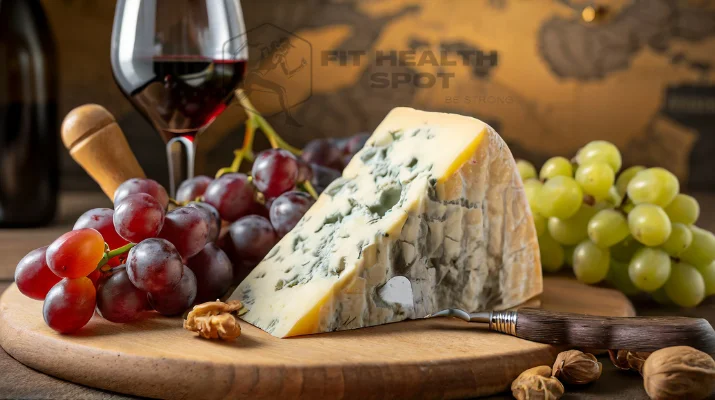
Gorgonzola, a name that resonates deeply within the culinary world, is not just another cheese. It’s a journey, a tradition, and a testament to the art of cheesemaking that traces back centuries. Originating from Italy, this blue-veined delicacy has managed to make a prominent mark on cheese boards, restaurant menus, and households around the world.
Its significance in global cuisine is undeniable. From the rustic taverns of its Italian homeland to the upscale restaurants of New York and Tokyo, Gorgonzola stands as a beacon of rich flavor and creamy texture. Chefs and food enthusiasts alike laud it for its versatility—be it melted into a luxurious sauce, crumbled over salads, or simply savored with a glass of fine wine. The story of Gorgonzola is not just about cheese; it’s about the intricate tapestry of culture, history, and gastronomy that it brings to the table.
Unraveling the Gorgonzola Mystery

What is Gorgonzola Cheese?
A question that might sound simple yet opens doors to a rich tapestry of flavors, tradition, and art. Gorgonzola is a blue-veined, soft cheese that boasts a unique tangy and creamy profile. Made primarily from unskimmed cow’s milk, its distinct blue veins are the result of specific mold spores introduced during the cheesemaking process.
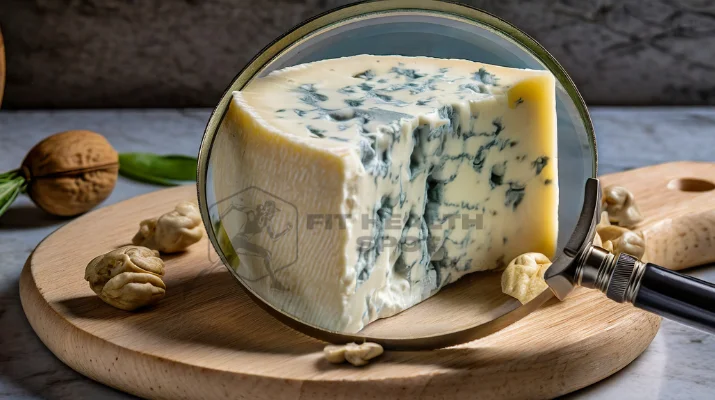
Diving deep into its origins, Gorgonzola has roots in the town bearing its name, located in the Lombardy region of Italy. Legend has it that it was an accidental discovery by a young cheese maker in the year 879 AD. Today, it stands as one of the world’s oldest blue-veined cheeses. The production process, matured over centuries, is a harmonious blend of tradition and innovation.
Its fame isn’t limited to its birthplace. Across continents, it’s celebrated for its exquisite taste and texture. For a better understanding of where Gorgonzola stands in the world of cheeses, one can compare it to other illustrious cheeses featured on the International Cheese Organization’s site.
In doing so, one realizes that while each cheese has its unique narrative and character, Gorgonzola’s tale is particularly captivating, a testament to Italy’s rich culinary heritage.
Gorgonzola vs. Blue Cheese: A Culinary Exploration
The world of cheese is vast and varied, with each type offering its unique palette of flavors and textures. Among them, the debate between Gorgonzola and blue cheese often captures the attention of cheese enthusiasts. While the two share some similarities, delving deeper reveals their distinctive characteristics.
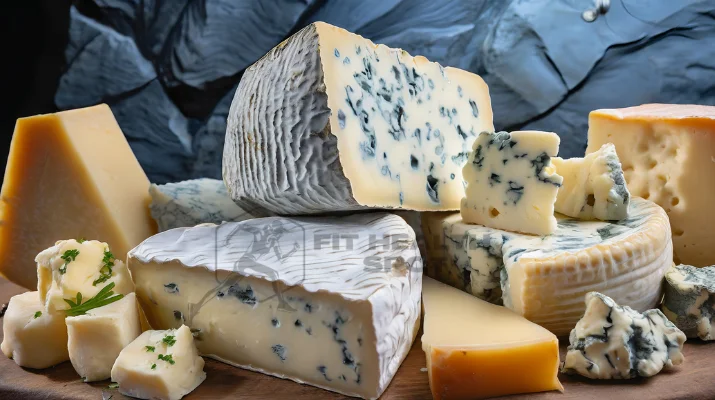
Differences in Taste, Texture, and Production
Gorgonzola is characterized by its buttery texture and mild, creamy flavor with a hint of sharpness. On the other hand, blue cheeses, which encompass a broader category, can range from intensely spicy to delicately mild. Their texture can also vary from crumbly to creamy.
In terms of production, while both kinds of cheese involve the introduction of mold spores, Gorgonzola follows a specific process tied to its Italian roots, utilizing penicillium glaucum. Blue cheeses might use various strains of mold, including penicillium roqueforti, which is commonly associated with the famous Roquefort cheese.
Answering the Question: Is Gorgonzola Blue Cheese?
In simple terms, Gorgonzola is a type of blue cheese, given its blue veining. However, not all blue cheeses are Gorgonzola. Think of Gorgonzola as a square and blue cheese as a rectangle. Although every square falls into the category of rectangles, not all rectangles can be considered squares.
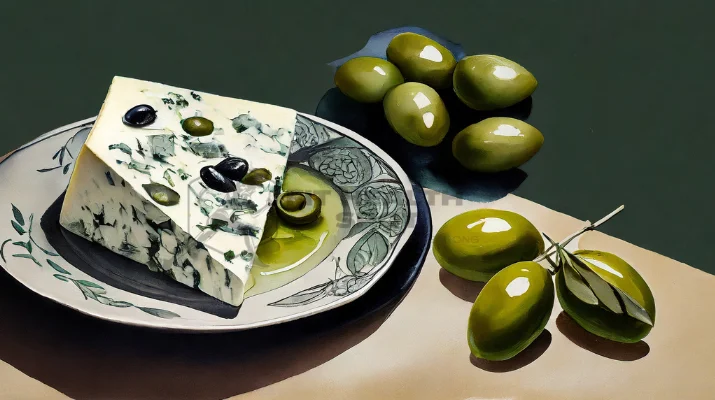
How Gorgonzola Contrasts with Other Foods
Taking green olives as an example, the salty and briny taste of green olives and their varieties is a world apart from the creamy tang of Gorgonzola. When paired, however, they can complement each other beautifully, with the olives’ piquancy balancing the richness of the cheese.
It’s this play of contrasts and complements in the culinary world that makes food pairing an art form, and Gorgonzola, with its distinct character, often emerges as the star in many dishes.
Diving Deeper: Types and Varieties
As we peel back the layers of the Gorgonzola narrative, we uncover the diverse types and varieties of this iconic cheese, each holding its unique charm and culinary application.

Gorgonzola Dolce: What Sets It Apart?
Gorgonzola Dolce, often hailed as the “sweet” or “gentle” version of Gorgonzola, stands out with its creamy, almost buttery texture and milder flavor profile. It lacks the sharp bite that some blue cheeses possess, making it a favorite for those seeking a more subtle experience. This cheese melts beautifully, making it an ideal candidate for sauces or a simple spread on crusty bread.
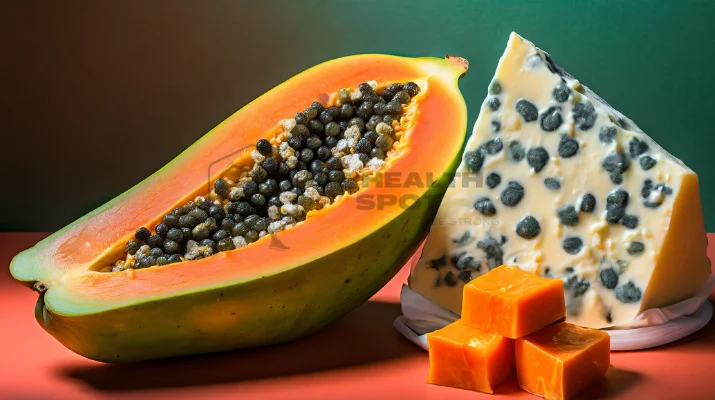
Compared to the Exotic: Gorgonzola Dolce and Green Papaya
While at first glance, Gorgonzola Dolce and green papaya might seem worlds apart, they share a common trait: a gentle approach to flavor. Green papaya, with its mild sweetness and subtle crunch, contrasts with Gorgonzola Dolce’s velvety texture but complements its delicate taste. In culinary experiments, pairing them in a salad might bring forth an intriguing meld of textures and flavors.
Gorgonzola Crumbles: Uses and Significance in Dishes
Gorgonzola crumbles are those firmer pieces of Gorgonzola cheese that are ideal for sprinkling over dishes. They offer a burst of tangy flavor wherever they’re used, be it atop salads, pizzas, or baked dishes. These crumbles melt slightly when exposed to heat, draping dishes in a layer of creamy goodness while also retaining their shape enough to provide a delightful texture contrast.
The significance of these crumbles lies in their ability to elevate a dish, transforming a simple salad or pizza into a gourmet experience. They serve as a testament to Gorgonzola’s versatility in the culinary world.
Culinary Delights with Gorgonzola
Gorgonzola, with its signature tang and creaminess, has been an integral part of various dishes that have wooed food lovers around the world. Let’s embark on a gourmet journey, exploring some of the delectable savory dishes where Gorgonzola plays a starring role.

Savory Dishes with Gorgonzola:
Steak Gorgonzola: A Classic Dish and its Health Benefits
Steak Gorgonzola is a sumptuous dish that brings together the robust flavors of a well-cooked steak and the creamy sharpness of Gorgonzola. Typically, the steak is grilled or pan-seared to perfection, topped with Gorgonzola crumbles that slightly melt from the steak’s residual heat.
Healthwise, while the steak provides a rich source of protein, iron, and essential nutrients, Gorgonzola adds a touch of calcium and probiotics. Pairing this dish with a side of steamed vegetables or a green salad can balance the meal, ensuring a mix of essential vitamins and minerals.

Chicken Gorgonzola: A Lighter Alternative
For those looking for a slightly leaner meat option, Chicken Gorgonzola presents an excellent choice. Tender chicken breasts, cooked to perfection, are complemented by a rich Gorgonzola sauce. The milder flavor profile of chicken allows the Gorgonzola’s nuances to shine through, creating a harmonious blend of flavors.
Gnocchi Gorgonzola: A Hearty Italian Classic
Gnocchi, those delightful potato dumplings, find a worthy companion in Gorgonzola. The pillowy gnocchi is drenched in a creamy Gorgonzola sauce, offering a mouthful of comfort with every bite. It’s a dish that resonates with the heart of Italian cuisine, much like how cavatappi pasta dishes exemplify the versatility and richness of pasta recipes.
These Gorgonzola-centric dishes not only satiate the palate but also speak volumes about the adaptability of this iconic cheese in diverse culinary contexts.
Salads and Dressings with Gorgonzola
The versatility of Gorgonzola cheese extends beyond just the main courses. Its creamy, tangy notes can elevate simple salads and dressings, introducing a gourmet touch to otherwise ordinary dishes.
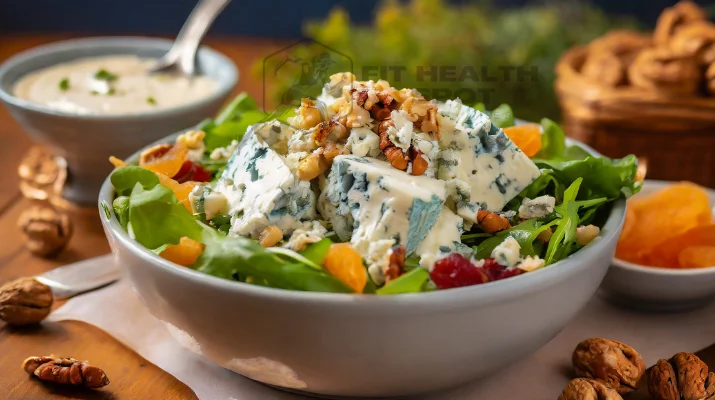
Gorgonzola Salad: How it Complements Different Vegetables
The sharpness of Gorgonzola can beautifully cut through the earthy flavors of leafy greens like spinach, arugula, or kale. When added to a salad, Gorgonzola crumbles provide a creamy contrast to the crunch of vegetables. Whether it’s the sweetness of cherry tomatoes, the bite of radishes, or the richness of toasted walnuts, Gorgonzola binds these flavors together, making each bite a harmonious blend of textures and tastes.
Gorgonzola Dressing: How to Make It and Why It’s a Healthier Option
Making a Gorgonzola dressing is simple. Blend Gorgonzola cheese, a touch of mayonnaise or yogurt, some olive oil, a dash of vinegar, and seasonings until smooth. The result is a thick, creamy dressing, rich in flavors yet without the added artificial preservatives of store-bought options. Opting for this homemade dressing not only ensures the authentic taste of Gorgonzola but also offers a healthier alternative, particularly when using yogurt as a base.
Delicacies to Try with Gorgonzola

Gorgonzola Pizza: A Twist to the Traditional Pizza
Pizza, a global favorite, gets an upscale twist with the addition of Gorgonzola. The creamy cheese, when paired with toppings like caramelized onions, figs, or prosciutto, can transform a regular pizza into a gourmet delight. The unique tang of Gorgonzola offers a refreshing break from the usual mozzarella, introducing a depth of flavor that’s truly unparalleled.
Gorgonzola Sauce and Cream Sauce: How They Can Elevate Your Dishes
Gorgonzola sauce, made by melting the cheese with some cream or milk, serves as a fantastic accompaniment to a range of dishes, from steaks to pasta. Its rich, velvety texture can elevate a simple dish, making it restaurant-worthy.
Gorgonzola cream sauce, on the other hand, is a richer variant, often infused with garlic, herbs, and sometimes white wine. It’s perfect for drizzling over grilled vegetables, enveloping pasta, or even as a dip for crusty bread.
The magic of Gorgonzola lies in its adaptability, proving time and again that it’s not just another cheese but a culinary gem.
Nutritional Insight and Health Benefits
Gorgonzola, a cheese often relished for its rich flavor, is more than just a culinary delight. Delving into its nutritional aspects reveals that this cheese is a storehouse of various essential nutrients, Providing numerous health advantages when ingested in appropriate amounts.

Breaking Down the Nutritional Content of Gorgonzola Cheese
At its core, Gorgonzola is a rich source of protein, offering essential amino acids required by our body. Alongside protein, it is abundant in calcium, supporting bone health. It also contains beneficial fats, vitamins like vitamin A and B2 (riboflavin), and minerals such as phosphorus. However, being a cheese, it’s also relatively high in calories and sodium, which necessitates mindful consumption.
How Gorgonzola Fits into the Larger Picture of Diet and Nutrition
In the vast realm of diet and nutrition, Gorgonzola holds its unique spot. When consumed in moderation, it complements a balanced diet by providing a dose of dairy-derived nutrients. Its rich flavor also means that a little goes a long way, allowing consumers to derive its taste and health benefits without overindulgence.
Comparing the Health Benefits of Gorgonzola with Other Nutrient-rich Foods
Take, for instance, lima beans. Although lima beans provide a substantial amount of dietary fiber, vitamins like B1 B6, and minerals such as magnesium and potassium, Gorgonzola offers a different set of nutrients mainly centered around protein and calcium. Both, in their own right, are healthful choices catering to varied nutritional needs. A meal could effectively combine the two, offering a dish rich in both protein and fiber.
The Role of Gorgonzola in a Balanced Diet
Integrating Gorgonzola into one’s diet can have multiple benefits. Pairing it with fruits like apples or grapes can make for a nutrient-rich snack. When used as a salad topping or in dressings, it adds a punch of flavor, reducing the need for excessive salt or other seasonings.
However, balance is key. Given its calorie content, it’s advisable to combine Gorgonzola with more fibrous foods or lean proteins to ensure a nutritionally rounded meal. As with all foods, moderation, variety, and balance are pivotal to harnessing Gorgonzola’s benefits without overshooting daily caloric or sodium limits.
In essence, Gorgonzola, with its melange of nutrients, can be a worthy addition to a health-conscious diet, amplifying not just flavors but also the nutritional richness of meals.
Tips and Tricks with Gorgonzola
Gorgonzola, like any fine cheese, demands special attention both in storage and usage to ensure its nuanced flavors are preserved and highlighted. Whether you’re a novice or a seasoned chef, the following tips can enhance your experience with this Italian gem.
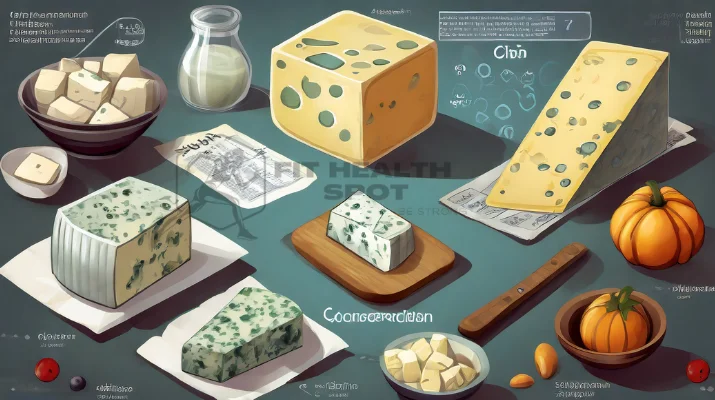
How to Store and Preserve Gorgonzola Cheese
- Refrigeration: After purchase, ensure that Gorgonzola is refrigerated. Ideally, it should be stored at temperatures between The temperature has increased from 1.6°C to 4.4°C, going from 35°F to 40°F.
- Wrapping: While plastic wrap can be used, cheese paper or wax paper is preferable as it allows the cheese to breathe, preserving its texture and preventing it from drying out.
- Container: To shield your Gorgonzola from absorbing the aromas of other fridge contents, you can either encase it in an airtight container or seal it within a resealable plastic bag with a small amount of air.
- Shelf Life: Fresh Gorgonzola typically lasts up to three to four weeks if stored properly. However, always check for any off-odors or mold growth other than its natural blue-green veins.
Cooking Tips to Ensure the Best Flavor from Gorgonzola
- Melting Point: Gorgonzola melts beautifully, making it perfect for sauces. To ensure an even melt, break or cut it into smaller pieces before adding to the pan.
- Pairing: The strong flavor of Gorgonzola complements sweet elements. Think of pairing it with honey, fruits, or balsamic reductions.
- Avoid Overcooking: Overcooking can cause Gorgonzola to become overly runny or lose its characteristic flavor. Add it towards the end of the cooking process, allowing just enough time for it to melt.
How Gorgonzola Can Be a Great Addition, Similar to Using Garlic Cloves for Health Benefits
Much like garlic cloves, known for their health benefits, Gorgonzola packs a punch both in flavor and health properties.
- : Some studies suggest that aged cheeses like Gorgonzola possess anti-inflammatory properties.
- Bone Health: Being rich in calcium, regular, moderated consumption of Gorgonzola can contribute to bone health.
- Versatility: Just as garlic can be added to a plethora of dishes, so can Gorgonzola. From pasta to salads, its potential applications in the kitchen are vast.
The key, however, is mindful consumption. While garlic has heart-healthy allicin and antioxidants, Gorgonzola brings protein and calcium to the table. Integrating both into one’s diet can provide a varied, flavorful, and nutritionally dense eating experience.
Conclusion
Gorgonzola, a stalwart of Italian gastronomy, has been celebrated for generations not just for its robust and tangy flavors but also for its impressive health benefits. As we’ve navigated through its rich history, types, culinary applications, and nutritional insights, it’s evident that this cheese stands out as a testament to the artistry and tradition of cheesemaking.
But it’s not just the flavor that makes Gorgonzola so desirable; its health facets, from providing essential proteins to being a source of calcium, make it a nutritious choice for those looking to diversify their diet. While it may not be an everyday ingredient for many, its occasional integration can bring about a delightful change in one’s culinary journey, balancing taste with nutrition.
Speaking of diversifying one’s diet, it’s always a great idea to venture into other nutritionally rich foods. For instance, buckwheat flour offers a plethora of health benefits, being a great gluten-free alternative with a good dose of dietary fiber and essential minerals. On the other hand, oat bran stands as a champion for heart health, aiding in lowering cholesterol levels and offering a generous amount of soluble fiber.
In essence, while Gorgonzola stands as a beacon of culinary delight, it’s crucial to recognize the broader spectrum of foods that can enhance our health and well-being. From the robustness of Gorgonzola to the heartiness of buckwheat flour and the wholesomeness of oat bran, diversifying our plates ensures not just a gastronomic adventure but also a journey toward a healthier life.
Join the Gorgonzola Conversation!
We’re always keen to hear from our readers, especially when it’s about a subject as delicious as Gorgonzola! Do you have a favorite Gorgonzola recipe or dish that you’d like to share? Whether it’s a family secret, an experimental concoction, or a classic favorite, we’re all ears. Share your culinary stories in the comments below.
For those who have a passion for exploring the wide array of foods from around the world, we highly recommend diving into our smoked salmon guide. It’s an excellent way to familiarize yourself with another delicacy that’s both flavorful and nutritious. Or perhaps you’ve heard about the invigorating and refreshing benefits of green tea but haven’t dived deeper? Our guide on green tea shots can shed light on its secrets and benefits.
But let’s get back to Gorgonzola for a moment. Do you remember the first time you tasted this Italian delight? Was it love at first bite, or was it an acquired taste for you? Share your initial experiences and memories associated with this unique cheese; we’re eager to read your stories!
Lastly, for our health-conscious readers who are always on the lookout for methods to enhance their wellness routines, don’t miss out on our guide on intermittent and dry fasting. It provides insights into these popular health trends and how they can be beneficial for your body and mind.
Keep the culinary conversations flowing, and let’s continue our journey toward understanding and relishing the world’s many gastronomic wonders together!
Frequently Asked Questions (FAQs) about Gorgonzola
What exactly is Gorgonzola cheese?
Gorgonzola is a type of blue cheese originating from Italy. It’s characterized by its distinct blue or green veins, a result of the mold used during its production. The flavor can vary from subtle to robust, contingent upon its maturation.
How does Gorgonzola differ from other blue cheeses?
While Gorgonzola is a type of blue cheese, its taste, texture, and production methods might differ from other blue cheeses. Gorgonzola, especially the “dolce” variety, tends to be creamier and milder compared to other sharper blue cheeses.
Is Gorgonzola cheese suitable for vegetarians?
Traditional Gorgonzola uses animal rennet in its production, which might not be suitable for some vegetarians. However, some modern versions use vegetarian rennet. It’s always a good idea to check the label or ask the producer directly.
How should I store Gorgonzola to maintain its freshness?
Store Gorgonzola in the refrigerator, wrapped in foil, or inside an airtight container. This preserves its moisture and prevents it from absorbing other flavors in the fridge. Before consumption, let it sit at room temperature for about an hour to enhance its flavor.
Can I cook with Gorgonzola, or is it just for direct consumption?
Absolutely! Gorgonzola is versatile and can be used in various recipes, from sauces and dressings to main dishes like pizzas and plates of pasta. Its creamy texture and rich flavor can elevate many dishes.
